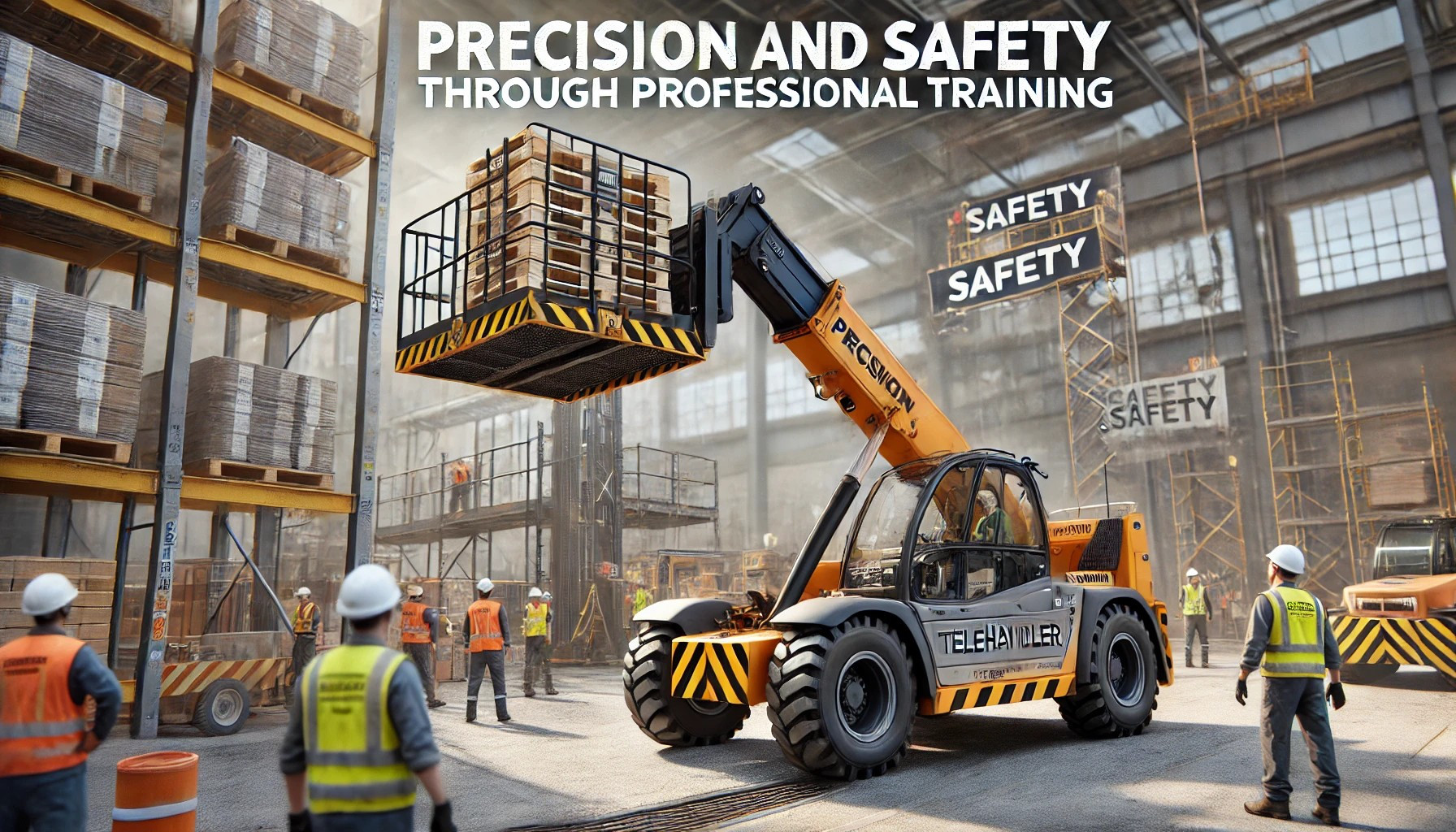Precision on the Job: Telehandler Training for Operators
Introduction: The Importance of Proper Telehandler Training
Telehandlers, also known as telescopic handlers or boom lifts, are versatile and powerful machines widely used in construction, agriculture, and warehousing. Their ability to lift, move, and position heavy loads with precision makes them indispensable on many job sites. However, operating a telehandler requires more than just basic skills; it demands proper training to ensure safety, efficiency, and compliance with workplace regulations.
At Get Drivers Ed, we offer comprehensive telehandler training programs designed to equip operators with the knowledge and skills needed to excel in their roles. In this blog, we’ll explore why telehandler training is essential, what it entails, and how it can transform job site safety and productivity.
Why Telehandler Training Matters
1. Ensuring Workplace Safety
Operating a telehandler involves inherent risks, including tip-overs, load instability, and collisions. Proper training significantly reduces these risks by teaching operators how to handle the machine safely and effectively.
At Get Drivers Ed, our telehandler training focuses on hazard recognition, load handling, and safe operating procedures, ensuring operators are prepared for real-world challenges.
2. Meeting OSHA Requirements
Employers are required by OSHA regulations to provide telehandler training to operators. Failure to comply can lead to hefty fines and increased liability. Enrolling in an OSHA-compliant program, such as the one offered by Get Drivers Ed, ensures that operators meet legal standards while promoting a culture of safety on the job.
3. Boosting Operator Confidence
Proper training empowers operators with the confidence to handle telehandlers in various scenarios, from tight construction sites to uneven terrain. Confident operators are not only safer but also more productive, making training a worthwhile investment.
4. Enhancing Job Performance
Skilled telehandler operators are better equipped to complete tasks efficiently and accurately. Training provides the technical knowledge and practical experience needed to maximize the capabilities of the machine, ensuring smoother operations and fewer delays.
What Telehandler Training Entails
1. Understanding Equipment Basics
Operators learn about the components and functions of a telehandler, including:
Boom and attachment controls
Load capacity and stability factors
At Get Drivers Ed, we emphasize hands-on learning to ensure operators are comfortable with every aspect of the equipment.
2. Safe Operating Techniques
Our training program covers essential skills, such as:
Navigating uneven terrain
Safely lifting and positioning loads
Operating in confined spaces
Recognizing and mitigating workplace hazards
3. Compliance with Regulations
Operators gain a thorough understanding of OSHA standards and workplace safety protocols, ensuring they meet all legal requirements.
4. Practical Assessments
Training includes practical assessments to evaluate an operator’s ability to handle the telehandler safely and effectively. This ensures that participants are job-ready upon completion of the course.
Benefits of Telehandler Training
1. Improved Workplace Safety
Properly trained operators are less likely to cause accidents, reducing the risk of injuries and damage to equipment.
2. Increased Productivity
Skilled operators can complete tasks more efficiently, minimizing downtime and improving overall job site performance.
3. Cost Savings
Fewer accidents mean lower repair and maintenance costs, as well as reduced insurance premiums.
4. Career Advancement Opportunities
Certification through a program like Get Drivers Ed demonstrates professionalism and expertise, opening doors to better job opportunities and higher pay.
Why Choose Get Drivers Ed for Telehandler Training?
At Get Drivers Ed, we’re committed to providing high-quality training that meets the needs of both operators and employers. Here’s why our program stands out:
Comprehensive Curriculum: Covering everything from equipment basics to advanced techniques.
Flexible Online Learning: Study at your own pace with our user-friendly platform.
OSHA Compliance: Our courses meet all regulatory standards.
Expert Instructors: Learn from experienced professionals who understand the challenges of the job.
Tips for Successful Telehandler Operation
Perform Regular Inspections: Always check the telehandler for wear and tear before use.
Understand Load Limits: Never exceed the machine’s maximum load capacity.
Stay Aware of Surroundings: Be mindful of other workers, vehicles, and obstacles on the job site.
Follow Safety Guidelines: Adhere to workplace protocols and use personal protective equipment (PPE).
Seek Additional Training: Continuously update your skills to stay current with best practices and regulations.
Conclusion: Mastering Telehandler Precision with Get Drivers Ed
Operating a telehandler requires more than just mechanical knowledge—it demands precision, safety awareness, and confidence. Proper training is essential for ensuring workplace safety, meeting regulatory requirements, and maximizing job site efficiency.
At Get Drivers Ed, we make telehandler training accessible, effective, and tailored to your needs. Our comprehensive courses equip operators with the skills and certification required to excel in their roles and contribute to a safer, more productive workplace.
Ready to elevate your skills? Visit Get Drivers Ed today to enroll in our telehandler training program. Let us help you achieve precision on the job and set the foundation for a successful career.


